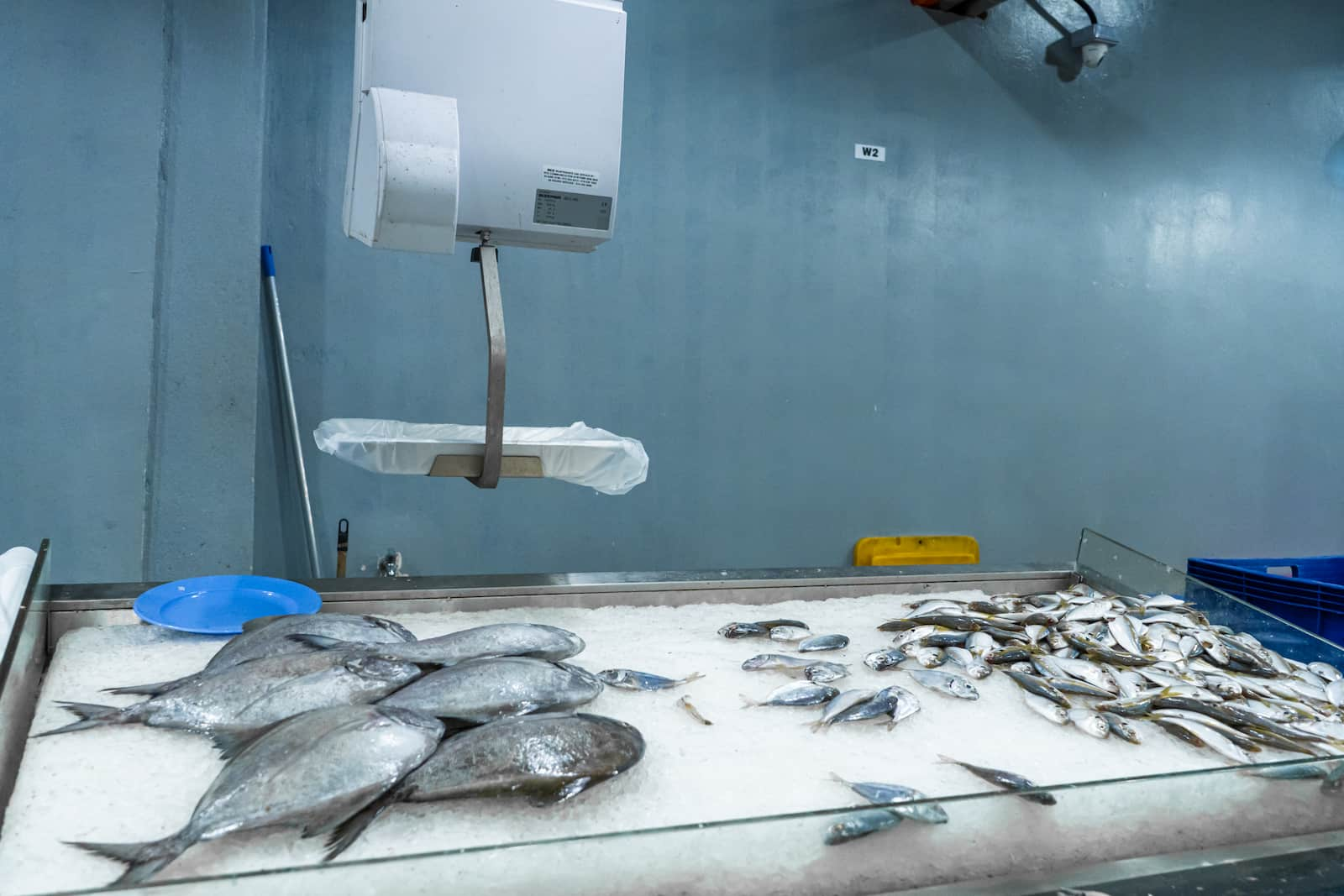Cold Storage: An Effective Solution for Your Seafood Business!

Fresh products require special storage methods to extend their shelf life. One of the most essential methods is utilizing cold storage.
Cold storage is a specially designed room to maintain low temperatures and preserve product quality. One of the products that requires cold storage is seafood. This article will discuss the benefits, types, and tips for choosing seafood cold storage. Read on to the end!
Cold Storage for Seafood
To support operational success, many industries require cold storage, including companies in the food sector that sell seafood. So, what is seafood cold storage?
Seafood cold storage is a refrigerated storage space designed to maintain the quality of seafood. The temperature for storing fish and other seafood typically ranges from -18°C to -20°C. This equipment is commonly used at fish auction sites, seafood processing plants, exporting companies, and restaurant suppliers.
Benefits of Using Cold Storage for Seafood
Using cold storage is vital for seafood preservation, offering several benefits:
1. Minimizes Bacterial Growth Risk
Seafood contains high levels of water and protein and originates from open sea environments, making it susceptible to bacterial contamination and spoilage without proper handling. Cold storage at low temperatures inhibits bacterial metabolism, reducing the risk of spoilage.
2. Maintains Freshness
Even after death, seafood contains active natural enzymes that can cause off-odors, soft textures, and color changes. Cold storage slows down enzyme activity, preserving the freshness, texture, and taste of seafood until it reaches consumers.
3. Extends Product Shelf Life
Seafood spoils quickly at room temperature. Consistent low temperatures in cold storage reduce spoilage risks and significantly extend the shelf life of seafood products.
4. Expands Market Reach
Prolonged freshness facilitates wider distribution, allowing businesses to reach broader markets, increase profits, and scale operations.
Baca juga: Read also: 7 Ways to Extend the Shelf Life of Fresh Products
Types of Cold Storage Temperatures for Seafood
Here are several types of seafood cold storage that may suit your business:
1. Ambient/AC Temperature Cold Storage
Its main advantages are cost-effectiveness and ease of use, but it’s not suitable for long-term storage due to the lack of stable temperature control.
2. Chiller Temperature Cold Storage
This temperature is used for short-term fresh seafood storage—like keeping fish in a restaurant or shrimp in a supermarket chiller. Ideal for maintaining freshness without freezing. However, storage duration is limited to 3–7 days.
3. Frozen Temperature Cold Storage
Freezer storage is suitable for long-term preservation, especially for export purposes.
Seafood is slowly frozen, but this can lead to large ice crystals that affect texture.
4. Air Blast Freezer
Unlike slow freezing, air blast freezers freeze seafood rapidly, preventing the formation of large ice crystals and maintaining product texture. Though effective, this system requires higher electricity consumption and larger investment.
Baca juga: Read also: Understanding the Differences Between Cold Storage and Standard Freezers
Tips for Choosing Cold Storage for Seafood
To find the best cold storage for your business needs, consider the following:
Define the Purpose: Whether it's for temporary storage, long-term freezing, or distribution—knowing your objective helps determine the right temperature and features.
Know the Characteristics of the Seafood: Different seafood has different requirements. For example, live shellfish don’t need freezing, but tuna needs fast freezing due to its sensitivity to oxidation.
Consider the Storage Capacity: Choose a system that suits your production volume, allows for future expansion, and supports an efficient workflow.
Choose Energy-Efficient Units: Energy-saving cold storage reduces operating costs. Look for units with high-efficiency compressors, quality insulation, and eco-mode settings.
Now that you’ve explored the different types of seafood cold storage, have you decided which one best suits your business?. Once selected, don’t forget to maintain the equipment properly—it’s a crucial investment for your growth.
If you are looking for fish or seafood cold storage, MGM Bosco Logistics is ready to help. We offer cold storage solutions with automated digital temperature monitoring systems.
We also provide refrigerated truck services with advanced technology, covering several regions in Indonesia, to support your product distribution needs.
Contact us now to learn more about MGM Bosco Logistics services!
Baca juga: Refrigerated Box Trucks: An Effective Delivery Method to Preserve Product Quality
Referensi:
https://bjtindonesia.id/2025/02/01/cold-storage-untuk-ikan-dan-seafood-mana-yang-paling-efektif/
https://kontainerindonesia.co.id/blog/cold-storage-ikan/#Jenis_Cold_Storage_Ikan